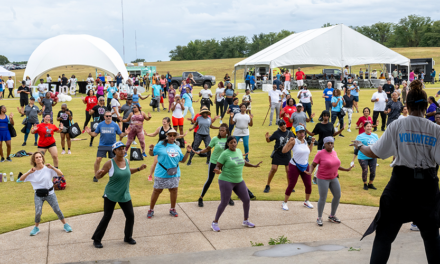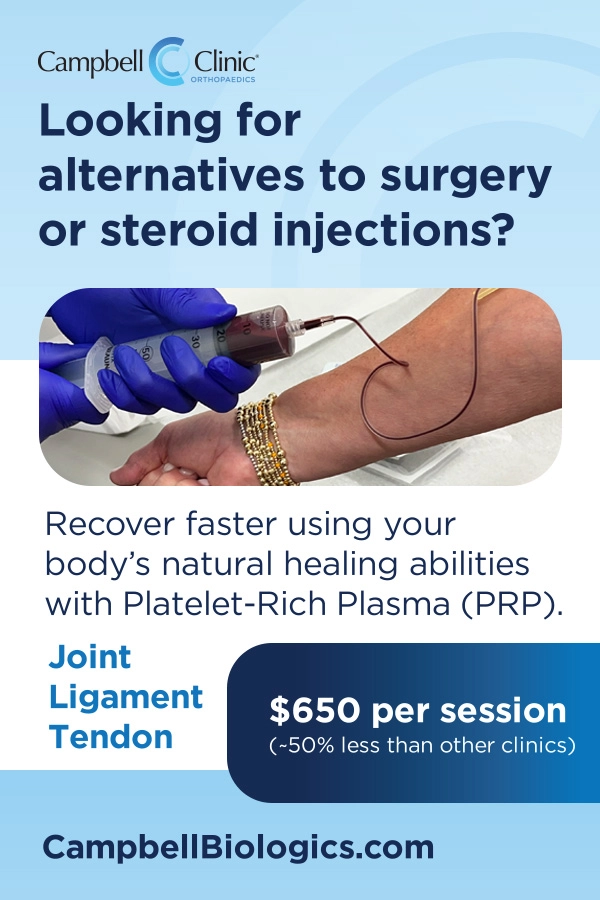By Kelly Josephsen
Many people associate vascular disease with risk factors like aging, lack of exercise, or obesity.
However, young, high-functioning athletes can also face a heightened risk of certain vascular disorders. A vascular surgeon can help get them back to peak performance.
Dr. Erica Mitchell, medical director of The Vascular Institute at Regional One Health, said, “We treat a variety of conditions, including issues impacting young, active individuals. We use the least invasive treatment, so patients have an easier recovery and resume normal activity quickly.”
At The Vascular Institute, Dr. Mitchell’s team includes Dr. Elianne Rojas, Dr. Maunil Bhatt, nurse practitioner Alicia Farris, and physician assistant Kelly Kriklava. As an academic practice affiliated with the University of Tennessee Health Science Center, they treat a full range of vascular conditions, including several that athletes should keep on their radar.
Popliteal Artery Entrapment Syndrome
PAES occurs when the calf muscle presses on the artery behind the knee, impeding blood flow to the lower leg and foot. Symptoms include pain, tingling, swelling or numbness in the calf, and cold feet after exercise.
“It can be linked to strenuous activity and usually occurs in the late teens or 20s,” Dr. Mitchell said. “Runners, cyclists, and athletes who do high-intensity training are at elevated risk.”
Surgery is the best treatment: “We can release the muscle through a small incision, giving the artery more room. Patients usually return to normal activity with no more symptoms.”
Thoracic Outlet Syndrome
TOS disorders occur when blood vessels or nerves between the neck and armpit are compressed, causing shoulder pain, neck pain, and numbness in the fingers.
“These are repetitive-use disorders, so we see them in sports where athletes make the same arm movements over and over, like tennis, swimming, basketball, and baseball,” Dr. Mitchell said.
Some patients recover through physical therapy, while others need medication or surgery.
However, with prompt treatment, patients typically return to competition.
Venous Insufficiency
In Venous Insufficiency, veins in the legs struggle to send blood to the heart. Intense training in distance running, cycling, tennis, and weightlifting can aggravate the condition.
Symptoms include heaviness, throbbing, swelling, and cramping in the legs. Sometimes the skin on the ankle looks red, yellow, or brown.
While compression garments, elevating your leg, and steroid creams can help, the best solution is minimally-invasive surgery. Dr. Mitchell said some procedures don’t even require an incision.
External Iliac Artery Endofibrosis
Leg pain and weakness can also be caused by uncommon entities like EIAE, also known as “cyclists’ iliac syndrome.” Originally described as a cause of lower leg pain in professional cyclists, EIAC also affects runners, tennis players, rowers, soccer players, and other athletes.
Arteries in the abdomen and groin become progressively scarred and fibrotic due to repetitive flexing, causing narrowing or kinking that causes leg pain with exertion. EIAC is often misdiagnosed and may be due to neurologic or musculoskeletal causes.
Several surgical interventions are available, and Dr. Mitchell’s team identifies the best option based on the athlete’s specific injury and long-term goals.
Listen to your body
Dr. Mitchell urges athletes not to ignore symptoms: “If you experience vascular symptoms, you might need a vascular specialist. We can provide treatments to ensure optimal outcomes, and we offer a personalized approach that includes involving you in decisions about your care.”
Learn more at Regionalonehealth.org/vascular-institute/.










